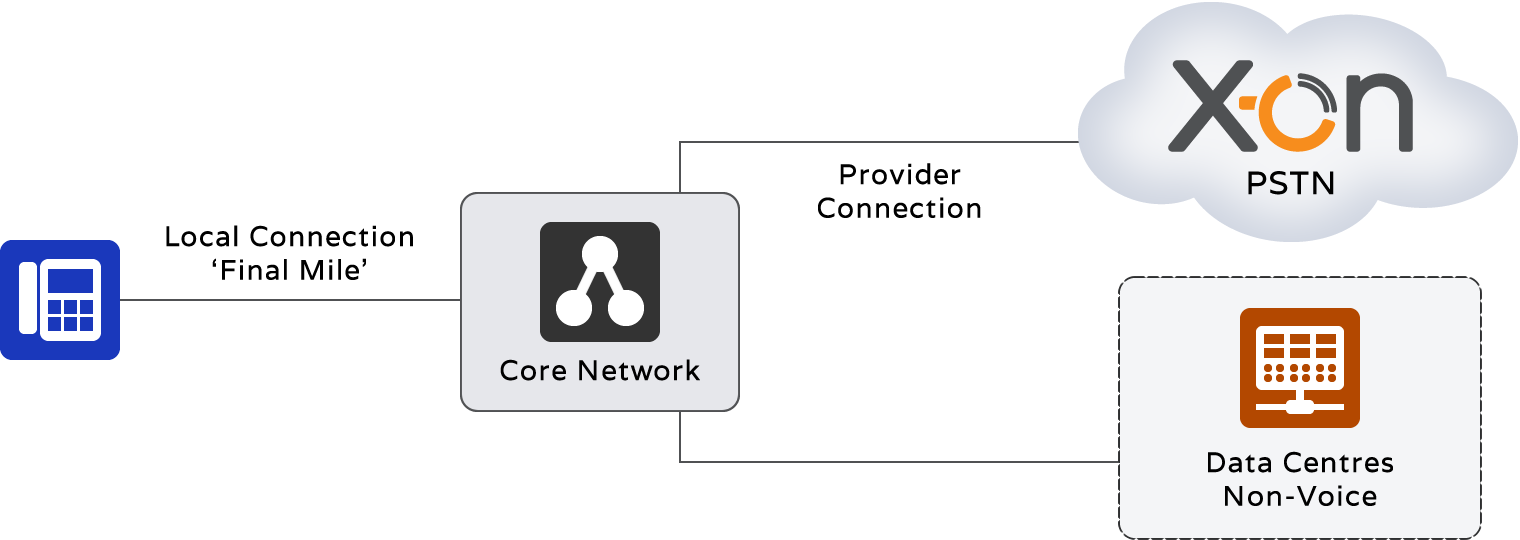X-on uses compression systems in accordance with bandwidth requirements. The following provides an insight into the effects of compression on call quality.
G.729 Compression vs G.711 Non-compressed
G.729 is an audio data compression algorithm with low bandwidth requirements. As such, G.729 is commonly used in VoIP applications where bandwidth is an important consideration.
G.711 is a standard for audio companding, which mitigates the negative effects of an audio channel with limited dynamic range. This allows signals with a large dynamic range to be transmitted over channels with a smaller dynamic range.
G.729 compression results in the voice component requiring a bit less than half the bandwidth of that required by non-compressed G.711. This comes at a cost, and consequently calls using G.729 compression are of lesser quality than can be achieved using G.711.
G.729 may result in call quality being ‘muffled’. This is not the same effect as packet loss in a poor network which would lead to crackles etc.
‘Best Efforts’ Internet Connections
The majority of X-on clients use the Internet with a quality ‘final mile’ connection such as fibre Ethernet, EFM (Ethernet in the First Mile) or Annex-M (broadband specification). The Internet is all ‘Best Efforts’ since it does not have the packet labelling technology that is the core of MPLS networks like IPClear.
IP Clear allows different types of access circuit (ADSL, SDSL, Leased Line, Ethernet) to be mapped into a MPLS cloud (Multiprotocol Label Switching), creating a network enabling the addition of an Internet access component.

Dedicated Connectivity
X-on connects to the Networks utilising these forms of Broadband and Ethernet connectivity.
Voice and Data Balance
The network has three distinct parts when considering shared voice and data. Where an X-on customer is using the ‘final mile’ segment for Voice and Data, it’s a precondition that the data on this segment is not at risk of causing contention with the voice.
This may be by:
- Dedicating the link to Voice only.
- Dedicating the link to Voice and X-on known data (e.g. wallboard data which is not significant).
- Putting some sort of limit on the amount of data that can use this link. This would not be by packet tagging (since in the case of Internet core network this would be ignored anyway) but by some other policing policy.
Once the data reaches the core network, tagging only becomes relevant if it is an MPLS network. The final Provider Connection is under X-on control and is not data contended.
For further information on X-on Call Quality please call Sales on 0333 332 0000.
